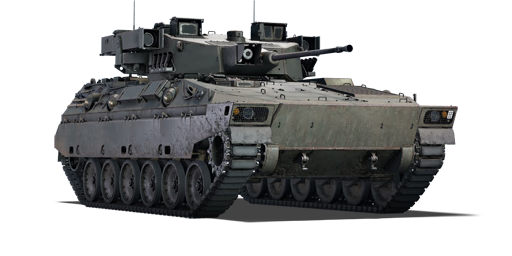The Type 89 IFV (89式装甲戦闘車) entered service with the JSDF in 1989. It supplements the APCs that preceded it, such as the Type 60 APC, Type 73 APC and other wheeled APCs, which were vulnerable without tank support. The Type 89 IFV was developed from 1980 to 1989, when it was officially adopted. It was meant to work with the Type 90 tank in different regions, but due to budget constraints and high cost of the Type 89 IFV, only about 120 vehicles were produced by 2014 out of an order for 300, mainly deployed in Hokkaido.
The Type 89 IFV was introduced in Update 1.85 "Supersonic". It can engage various targets with its Oerlikon KDE (35 mm) and its heavy Type 79 Jyu-MAT missiles. It is best suited for hit-and-run tactics, using its speed and smoke grenades to avoid direct fire and attack the weaker sides of enemy armour with APDS rounds. The Type 89 IFV also has a laser warning system that warns the player of incoming laser-guided missiles.
















